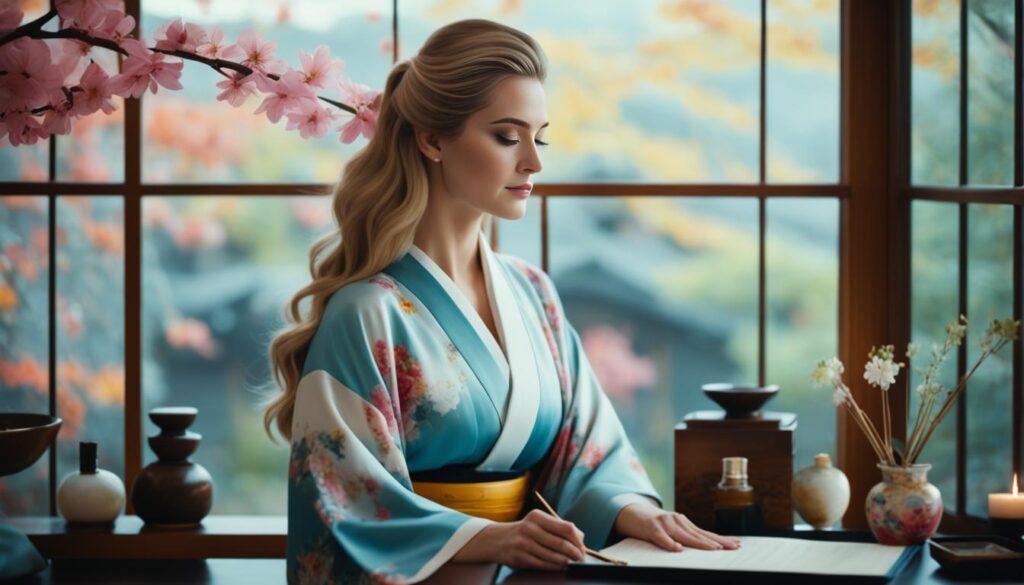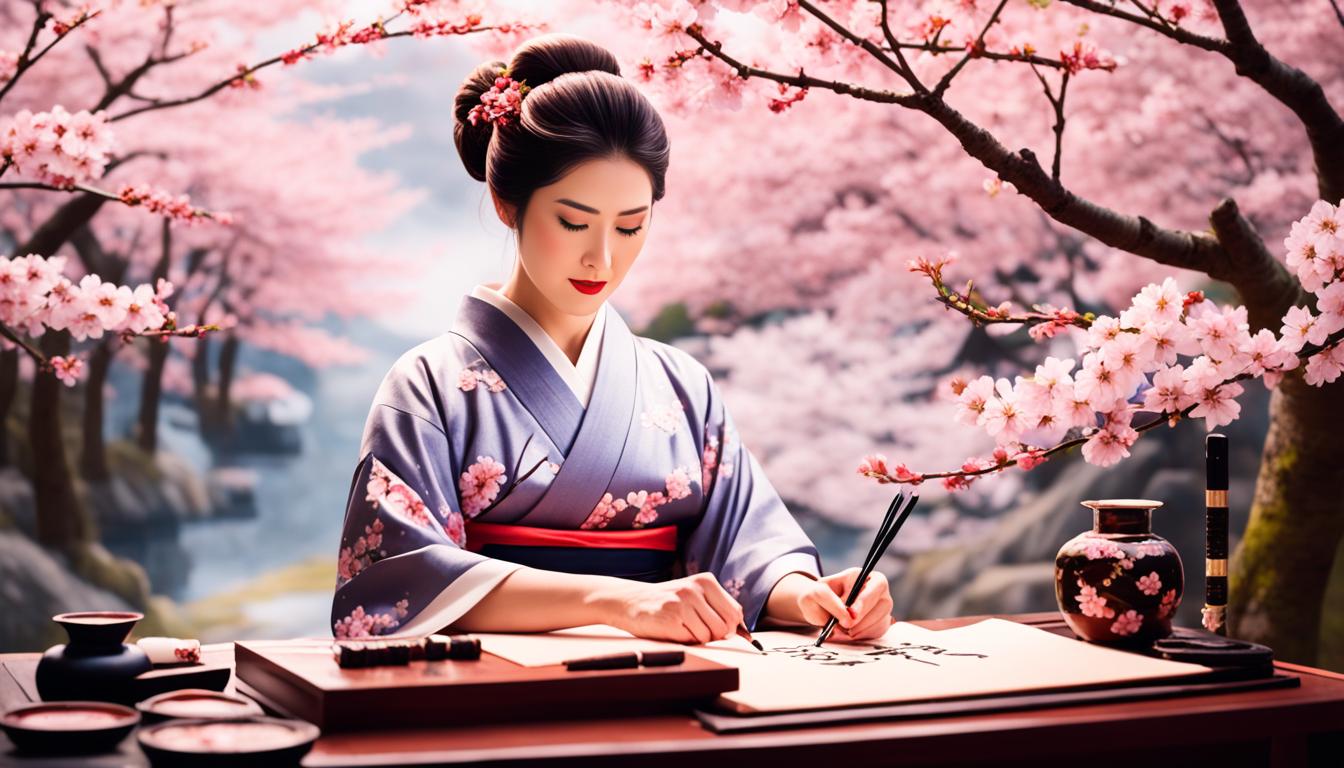The Heian era (794-1185 CE) was a golden age in Japanese literature. Women were the main force behind this literary boom. They wrote some of the most influential works, setting the stage for centuries of literary excellence.
In the Heian period, women’s literature rose to prominence. Female authors wrote groundbreaking autobiographies, diaries, and memoirs. Writers like Murasaki Shikibu and Sei Shonagon created masterpieces that still enchant readers today.
Their works shaped the Japanese literary tradition. They also gave us a peek into the culture and society of their time.
Several factors helped women’s writing flourish. The adoption of Chinese scholar-bureaucrat traditions and the development of dual writing systems were key. Changes in government structure also played a role, creating an environment where women could succeed. This made the Heian era a pivotal moment in Japanese literature, with women at its core.
Key Takeaways
- Women dominated early Japanese literature during the Heian era
- Female writers created influential autobiographical narratives and memoirs
- Murasaki Shikibu and Sei Shonagon were key figures in this literary movement
- Dual writing systems and government changes enabled women’s literary success
- The Heian period’s literary works continue to influence Japanese culture
The Rise of Women Writers in Heian-kyo

Heian-kyo, now known as Kyoto, was a cultural hub a millennium ago. The Fujiwara clan’s influence grew as they married their daughters into the imperial family. This led to a focus on educating women in arts and letters, making them desirable brides. Unexpectedly, this practice paved the way for women to create the era’s finest literature.
The success of women writers in the Heian Court came from three main factors: lineage, language, and leisure. These ladies had the time and resources to improve their writing skills. They wrote in vernacular Japanese, making their works accessible to a wider audience. This choice was key in shaping Gender in Japanese Literature.
Women authors blended classical Chinese with vernacular Japanese, creating a unique style. This innovation became a hallmark of Japanese Feminist Literature. The Heian period’s cultural landscape was largely shaped by these women’s writings, offering insights into court life and societal norms.
The rise of women writers in Heian-kyo marked a significant shift in literary traditions. Their works not only showcased their talents but also challenged existing norms. This period laid the foundation for future generations of female authors in Japan, leaving an indelible mark on the country’s literary heritage.
Women Authored Japanese Literature: Masterpieces of the Heian Era

In the Heian era, two remarkable works of Japanese Classical Literature were created. Murasaki Shikibu wrote The Tale of Genji around 1010 CE. It’s often called the world’s first novel. The story is full of complex relationships and deep insights into the characters.
Sei Shonagon wrote The Pillow Book, a collection of personal thoughts and observations. Both works give us a glimpse into life in the imperial court. They show how politics affected the relationships between empresses and their ladies-in-waiting.
The Tale of Genji feels like a story told by a close friend. It brings a long-lost world to life with its detailed descriptions. The Pillow Book delights readers with its humor and fun. These masterpieces have greatly influenced Japanese literature. Through translations, they continue to inspire writers worldwide.
Legacy and Influence of Heian Women Writers
The tradition of women’s writing in Japan is still going strong. Today’s female authors are inspired by their Heian ancestors. They include Yoko Ogawa, Yuko Tsushima, and Natsuo Kirino, who are pushing the boundaries of literature.
Yoko Ogawa’s stories are surreal, while Natsuo Kirino’s novels are thrilling crime stories. Yuko Tsushima writes about non-traditional families, showing how society has changed. Hiromi Kawakami mixes reality with fantasy, drawing readers in.
A new wave of writers, like Mieko Kawakami, brings new views to today’s issues. As more of their works get translated, they’re making a mark worldwide. They show that the spirit of Heian women writers is still strong today.

Leave a Reply